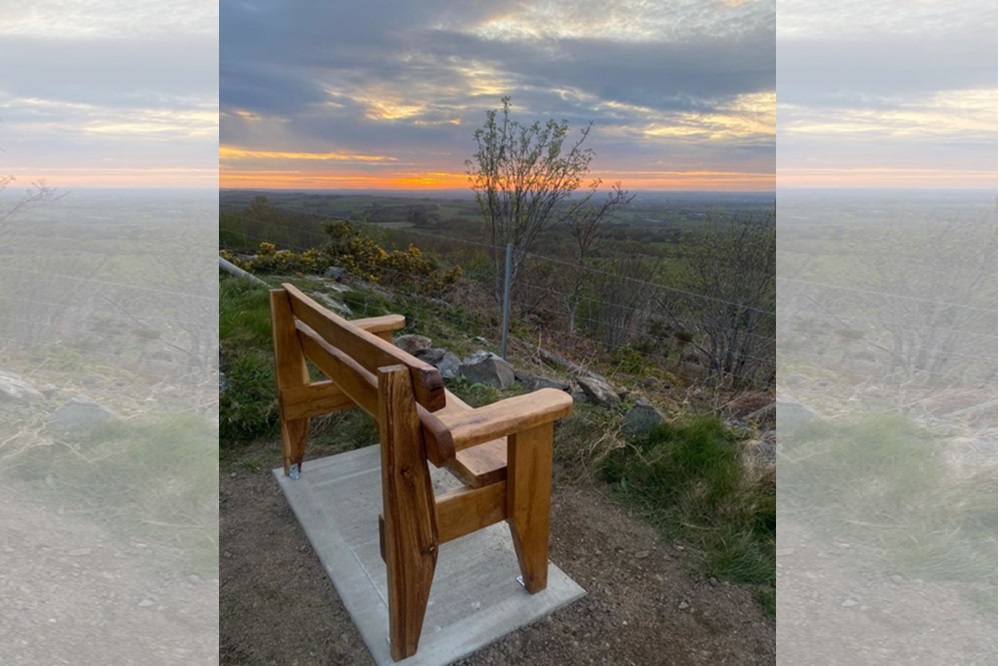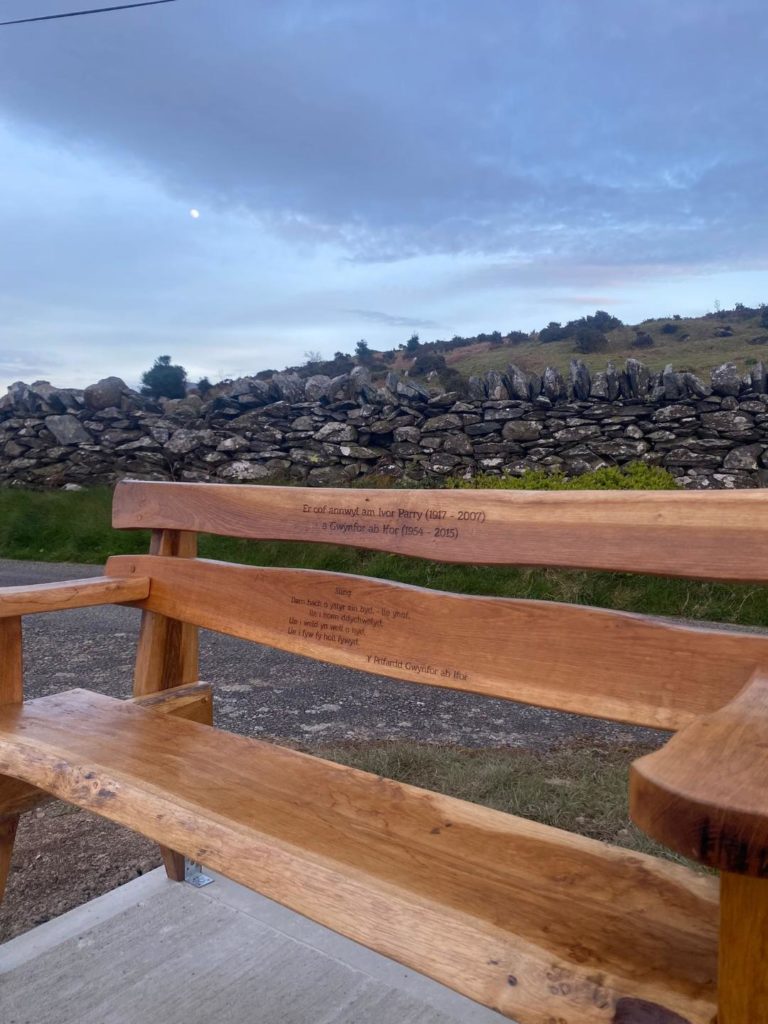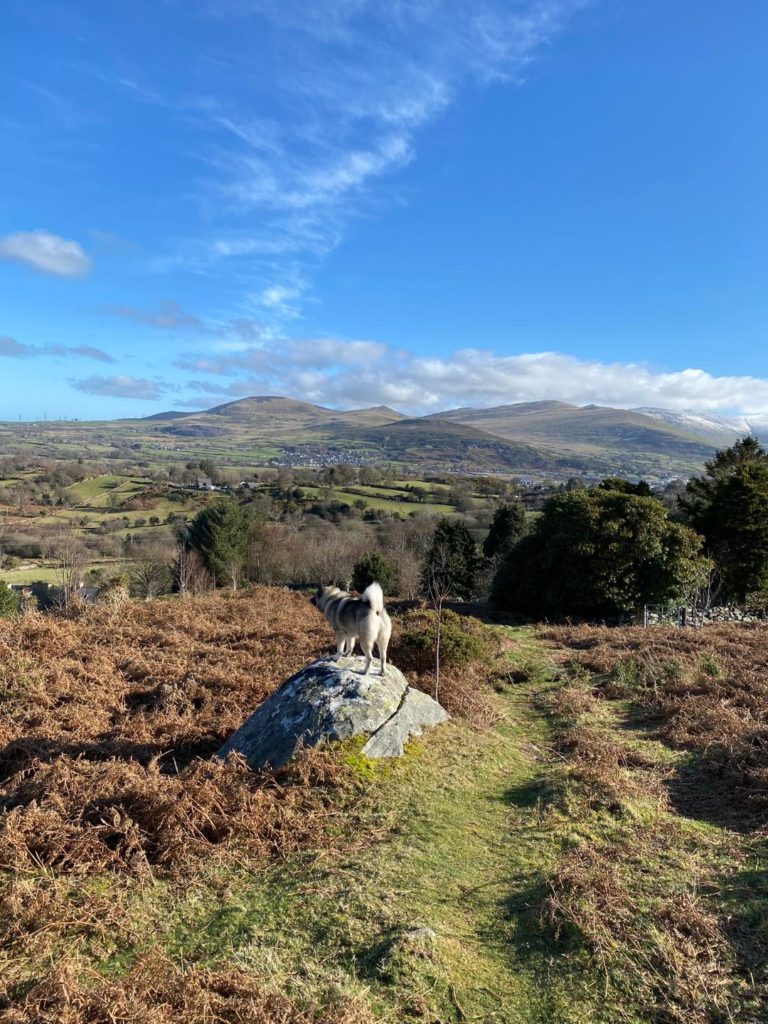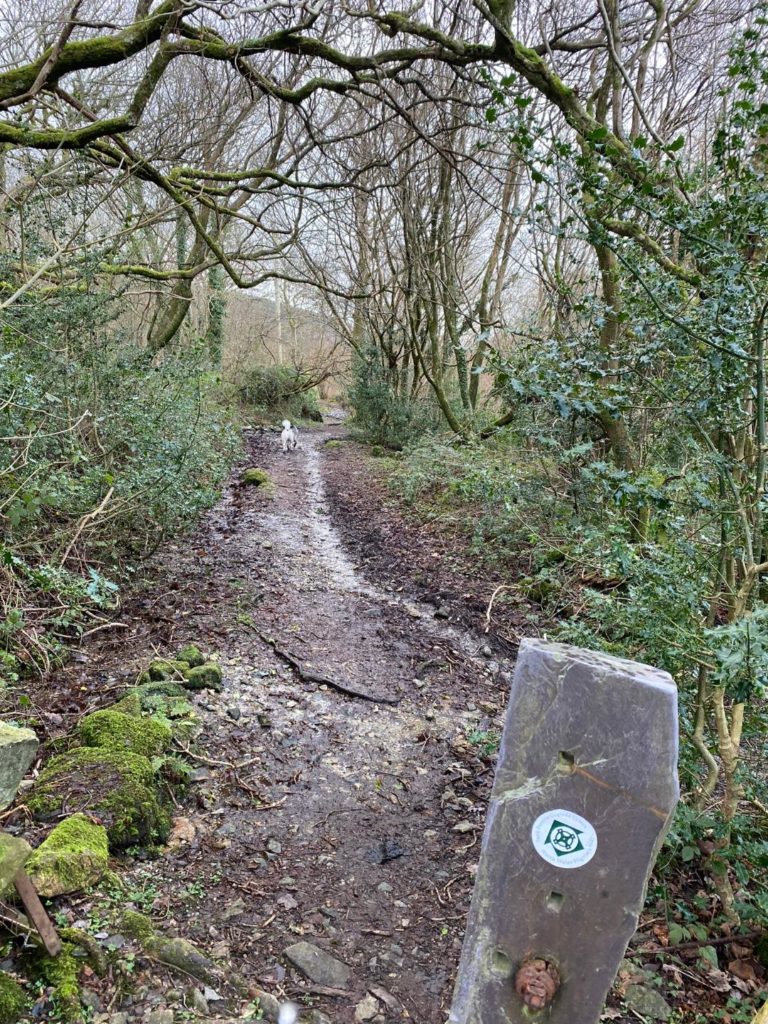Letter from Sling

Bethan Gwyn
Sunsets from the top of Allt Waun Hir are bewitching spells, not one is ever the same. Some nights varying hues of feathery heathered purple and fuschia-Barbie pink laced with slate-grey shades gently adorn the skyline’s ragged hem.
Other nights, pulsating strobes of sky-ray tangerine dazzle the horizon above Anglesey, enticing us up the steep lane to bathe in the rave of colour.
Or a bulb of red-blood fire suspends over Mynydd Cybi, its fierce filaments strobing over Mynydd Bodafon, Mynydd Parys and castaway Ynys Seiriol with its morse-coding lighthouse.
Until the sun finally slips and slides away, swallowed by the never-never line between land and sky.
The girls grew up with their father’s nightly bellow come spring, “Dowch i weld y machlud!” which was cue for hurriedly pulling on their wellies and scurrying up the lane before the kaleidoscoping magic show was over.
There they have now fittingly placed a rustic oak bench in memory of him and their taid, inscribed with an englyn as an ode to Sling penned by their father.
He was part of a long lineage brought up in this pocket of a hamlet nestled under the waistcoated hills.

“Darn bach o ystyr ein byd – lle ynof
Lle i hoen ddychwelyd.
Lle i weld yn well o hyd,
Lle i fyw fy holl fywyd.”
(Gwynfor ab Ifor)
This place is an insightful view of life with a magnificent panoramic view. To the right Ffridd Ddu’s shoulder gradually rises up from the sea with its Don Quioxte and Sancho Panza shaped Scots pine trees silhouetted against the skyline.
These trees marked the way for drovers swimming their cattle across the Menai Strait at the narrowest point at low tide.
Moel Wnion follows with its jaunty heather cap, then steep Gyrn and gentle Moel Faban with its Bronze Age burial cairns and Neolithic circles buried under the smothering gorse bushes.
Partneriaeth y Carneddau currently have several land sustainability schemes which involve burning some of the gorse bushes to control its invasiveness, providing enough grass for the free-roaming mountain ponies.
Also, to uncover the archaeological stone remains of iron age and medieval settlements and field systems buried underneath, echoing the old Welsh saying ‘aur dan yr eithin’ – the gold beneath the gorse.
My youngest daughter Rhiannon is an artist and has benefited from the seasonal pyres by collecting the ashes and incorporating them in her alchemy of burnt glazes covering her ceramics.
Autumn hues of crab-apple yellow, moss-mushy green, twig-dry brown and even sharp flinty blues.
Rough Drosgl comes next in the mountain ranges in sharp contrast to nearby smooth Llefn, followed by the princely Carneddau with Carnedd Gwenllian named after the last true Princess of Wales.
She was abducted as a baby by Edward 1st and his forces and imprisoned in a life-long sentence as a nun in a convent in Sempringham, Lancashire. This successfully ensured that the Welsh princes’ lineage after Llewelyn ein Llyw Olaf would cease.
Then drift your eyes across Y Foel Grach, the leaning Yr Elen attached to the side of towering Carnedd Llewelyn, the second highest peak in Wales.
Then Carnedd Dafydd, followed by Carnedd Fach dimunitive by name but with the biggest burial cairn of them all atop its peak, and the dark brooding Sgolion Duon before the glowing beacon of Pen yr Ole Wen.

Sling lies just above the Bangor to Llanberis section of the pilgrims’ path to Enlli.
From Craig Pandy, between Tregarth and Sling, the path veers off the main road and winds past Pandy, the old mill with its pond and water wheel where sheep’s wool from the surrounding farms was washed before being spun.
Discs denoting ‘Taith Pererin Gogledd Cymru’ (North Wales Pilgrims’ Way) with their green Celtic emblem are strategically stuck on posts by stiles, kissing gates and even trees along this part of the path.
There is an age-worn feeling to the mustard lichen stone walls and the pocked slate slabs under foot.
How many pilgrims or saints have passed through on their final dignitas journey hoping to be buried on Enlli?

Having gone through the kissing gate and passed through a sloping field where a blackthorn tree grows like Caledfwlch, King Arthur’s sword, out of a craggy boulder, you reach a gate leading to a very special well.
Ice-cold glacial water flows down from the hills to this well which has become a focus of worship with an eclectic collection of white stones growing in number each time I pass.
A twisted ancient oak tree towers above the well. Imprisoned within its grotesquely snaking limbs is what looks like a wizened, shrunken head held in a permanent choke.
Whether it’s a man or a woman it is hard to tell but the children have always called it the old woman’s tree, with its whispers of witchcraft, the occult and pagan worship.
Support our Nation today
For the price of a cup of coffee a month you can help us create an independent, not-for-profit, national news service for the people of Wales, by the people of Wales.









This is an excellent description of the area and especially poignant to me having been brought up in Pandy Farm and knew Gwyn ap Ifor. The view from Moelyci is breathtaking and there was a rock in Pandy that had almost the same view but nearer to the sea. One of the field’s that is mentioned was called Cae Wrach – witch field too! Thanks very much for an excellent description of the location.
Da iawn wir Bethan. Darn o ysgrifennu gwych am yr ardal ac mae’r englyn ar y fainc yn codi hiraeth arnai am Gwyn.